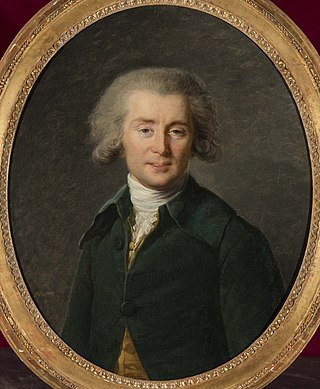
André Ernest Modeste Grétry was a composer from the Prince-Bishopric of Liège, who worked from 1767 onwards in France and took French nationality. He is most famous for his opéras comiques. His music influenced Mozart and Beethoven both of whom wrote variations on his works.

Les Indes galantes is a ballet héroïque, a type of French Baroque opera-ballet, by Jean-Philippe Rameau with a libretto by Louis Fuzelier. In its final form it comprised an allegorical prologue and four entrées, or acts, each set in an exotic place, the whole being unified around the theme of love. The work dates from 1735 except for the last entrée, which was added the following year. In 1761, however, Rameau dropped the relatively short and mildly contrasted third entrée so as to leave what is now considered the work's definitive form: Prologue; Le turc généreux ; Les incas du Pérou ; and Les sauvages . The dropped entrée was Les fleurs . Famous pieces from Les Indes galantes include the Dance of the Peace Pipe and the Chaconne, both from The Savages of North America.
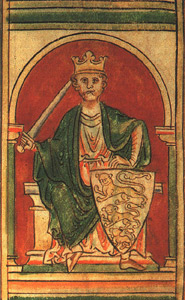
Richard Cœur-de-lion is an opéra comique, described as a comédie mise en musique, by the Belgian composer André Grétry. The French text was by Michel-Jean Sedaine. The work is generally recognised as Grétry's masterpiece and one of the most important French opéras comiques. It is based on a legend about King Richard I of England's captivity in Austria and his rescue by the troubadour Blondel de Nesle.

La double épreuve, ou Colinette à la cour, is a comédie lyrique in three acts written by André Grétry in 1782 to a French libretto by Jean-Baptiste Lourdet de Santerre, based on Charles Simon Favart's Ninette à la cour.

Les Horaces is an operatic tragédie lyrique by Antonio Salieri. The text was by Nicolas-François Guillard after Pierre Corneille's Horace.

Dardanus is an opera by Antonio Sacchini. It takes the form of a tragédie lyrique in four acts. It was first performed at Versailles on 18 September 1784, and subsequently at the Paris Opera on 30 November of the same year. The French-language libretto was adapted by Nicolas-François Guillard from that by Charles-Antoine Leclerc de La Bruère, which had already been set to music by Jean-Philippe Rameau in his earlier opera of the same name.

Nicolas-François Guillard was a French librettist. He was born in Chartres and died in Paris, the recipient of a government pension in recognition of his work writing librettos. He was also on Comité de Lecture of the Paris Opéra. One of the foremost of the French librettist of his generation, he wrote libretti for many noted composers of the day, including Salieri and in particular Sacchini. His most famous work is Iphigénie en Tauride, his first libretto, set by Gluck after the composer had initially rejected it. Gluck collaborated with Guillard to heavily recast the libretto, not only to suit Gluck's artistic preferences, but also to accommodate pre-existing music that Gluck borrowed, both from himself and from other composers, when composing the opera.

Les festes vénitiennes, also spelled Les fêtes vénitiennes, is an opéra-ballet by the French composer André Campra. It consists of a prologue and three entrées. All versions of the libretto are by Antoine Danchet. It was first performed on 17 June 1710 by the Académie royale de musique in the Salle du Palais-Royal in Paris. According to the usage of the time, it was originally simply billed as a "ballet", but it is one of the most important and successful instances of the new genre later classified by scholars as opéra-ballet, which had become popular in Paris around the end of the 17th century.

The Théâtre de la Porte Saint-Martin is a venerable theatre and opera house at 18, Boulevard Saint-Martin in the 10th arrondissement of Paris.
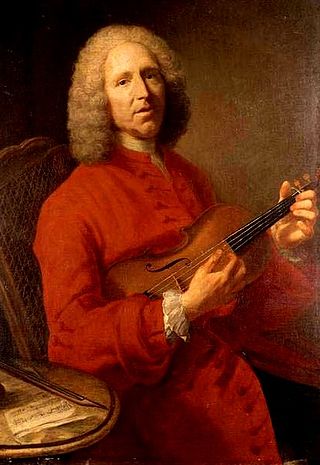
Anacréon is an opera by Jean-Philippe Rameau which was first performed at Fontainebleau on 23 October 1754. Its libretto is by Louis de Cahusac. It takes the form of an acte de ballet in one act. Rameau also composed another Anacréon in 1757. The latter was an act added to a revival of the opéra-balletLes surprises de l'Amour and has sometimes been performed and recorded as a stand-alone opera. It too features the Ancient Greek poet Anacreon as its hero, but the libretto and its plot are totally different.

Renaud is an opera by Antonio Sacchini, first performed on 28 February 1783 by the Académie Royale de Musique at the Théâtre de la Porte Saint-Martin in Paris. It takes the form of a tragédie lyrique in three acts. The French libretto, by Jean-Joseph Lebœuf, is based on Cantos XVII and XX of Torquato Tasso's epic poem Gerusalemme liberata and, more directly, on the five-act tragedy by Simon-Joseph Pellegrin, Renaud, ou La suite d'Armide, which had been set to music by Henri Desmarets in 1722 and was intended as a sequel to Lully's famous opera Armide. According to Théodore Lajarte, Lebœuf was helped by Nicolas-Étienne Framery, the regular translator of Sacchini's libretti.
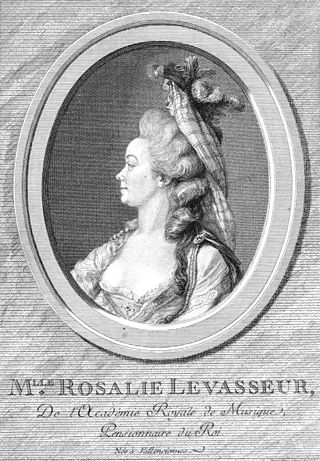
Marie-Rose-(Claude-)Josephe Levasseur, known in her day as Mademoiselle Rosalie, and later commonly referred to as Rosalie Levasseur was a French soprano who is best remembered for her work with the composer Christoph Willibald Gluck.
Guy Van Waas is a Belgian conductor, clarinetist and organist.
Henri Larrivée was a French opera singer. He was born in Lyon. His voice range was basse-taille. According to Fétis, Larrivée was working as an apprentice to a wigmaker when the head of the Paris Opéra, Rebel, noticed his talent for singing and hired him as a chorus member. He made his first solo appearance as a high priest in a 1755 revival of Rameau's Castor et Pollux. He was particularly associated with the works of Christoph Willibald Gluck, helping Gluck establish his "reform operas" in France. He found Gluck's rival, Niccolò Piccinni, less congenial but still worked with him on the premieres of operas including Roland (1778). After already getting a pension in 1779, he retired from the Académie Royale de Musique in 1786 and devoted most of the time he had left to live to tour around with his two daughters, Camille and Henriette, who played respectively harp and violin.
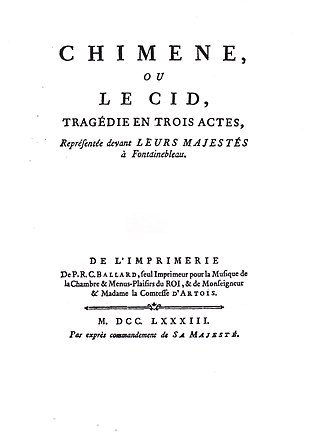
Chimène, ou Le Cid is a French-language opera by Antonio Sacchini. It takes the form of a tragédie (lyrique) in three acts, with a libretto by Nicolas-François Guillard. It was first staged at Fontainebleau on 16 November 1783. The subject of the work was inspired by the tragicomedy Le Cid by Pierre Corneille, and indirectly by the medieval Spanish epic Cantar de Mio Cid and a play by Guillén de Castro y Bellvís, Las Mocedades del Cid. Comedia Comedia primera and segunda (1605–1615).

Les bayadères is an opera in three acts by the composer Charles-Simon Catel. The French-language libretto, by Victor-Joseph Étienne de Jouy, is based on Voltaire's story L'education d'un prince. It was first performed on 8 August 1810 by the Paris Opéra at the Théâtre des Arts with the famous soprano Caroline Branchu in the lead role of Laméa. Les bayadères was Catel's most popular opera.
Étienne Morel de Chédeville was an 18th-century French playwright and librettist.

Cyrille Dubois is a French tenor performing as an opera and lieder singer.
Marie-Françoise-Adélaïde Gavaudan, called Mlle Gavaudan cadette and nicknamed Spinette (1767–1805), was a French operatic soprano.















